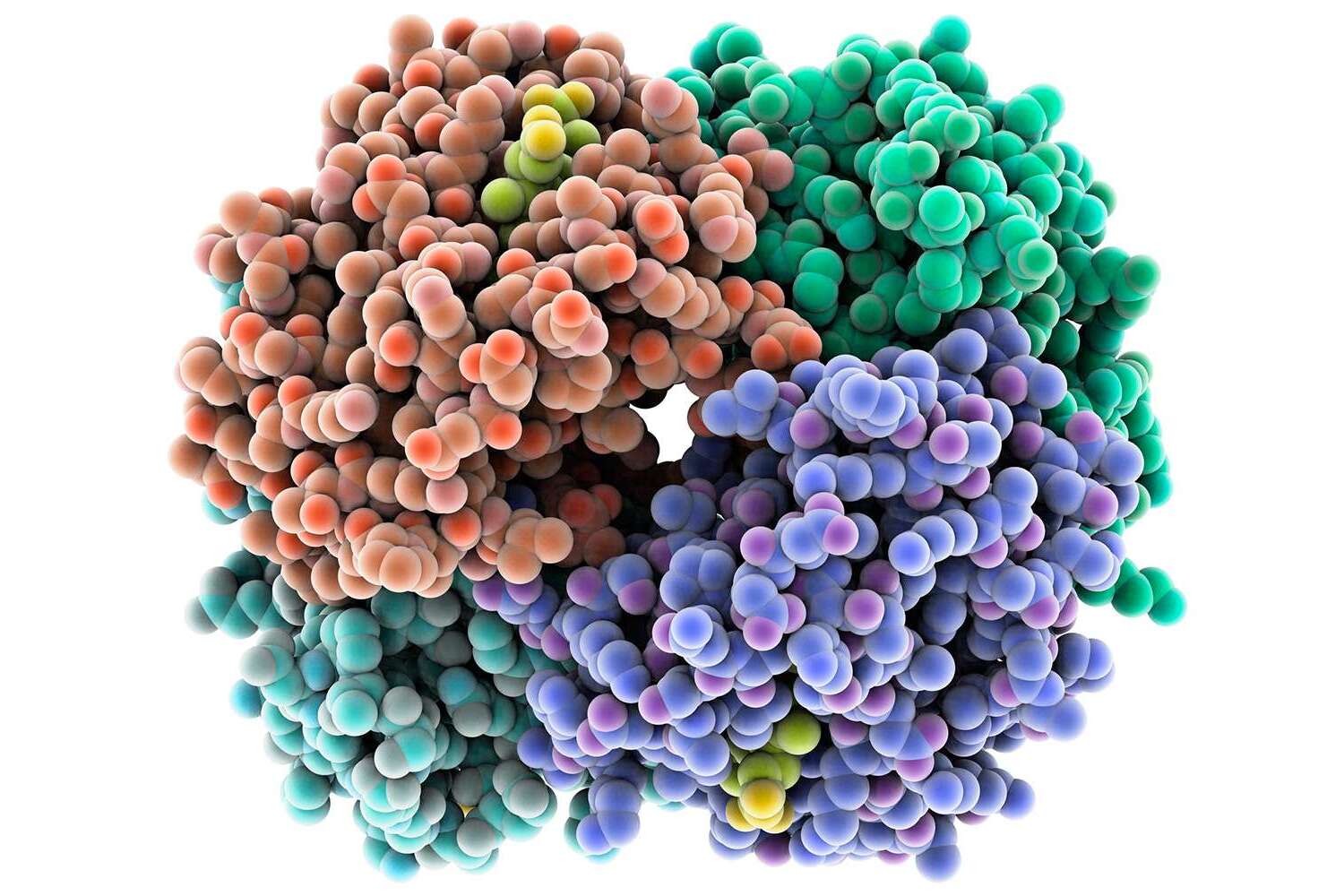
What is Ataxia? Ataxia is a neurological disorder that messes with your muscle coordination and balance. Imagine trying to walk a straight line but feeling like you're on a wobbly tightrope. It can affect your arms, legs, hands, and even speech. Ataxia isn't a disease by itself; it's a symptom that can come from many different causes. These include genetic mutations, infections, or even something as simple as a vitamin deficiency. People of all ages can get it, and its severity can range from mild to life-threatening. Understanding ataxia means diving into its types, symptoms, and treatments.
Understanding Ataxia
Ataxia is a neurological condition that affects muscle coordination and balance. It can impact various parts of the body, including the arms, legs, hands, fingers, and even speech. Let's dive into some key facts about this complex disorder.
-
Definition of Ataxia
Ataxia is a symptom characterized by impaired coordination of voluntary muscle movements. It is not a disease itself but rather a sign of various underlying conditions. -
Causes of Ataxia
Ataxia can stem from degenerative diseases, infections, immune system issues, metabolic disorders, and vitamin deficiencies. Acquired conditions like stroke, multiple sclerosis, and tumors can also cause it. -
Types of Ataxia
There are three main types: acquired, degenerative, and hereditary. Acquired ataxia results from external factors like alcohol abuse or medication side effects. Degenerative ataxia involves progressive nervous system damage, while hereditary ataxia is due to genetic mutations.
Hereditary Ataxia
Hereditary ataxias are genetic conditions passed down through families. They result from defects in specific genes, leading to abnormal protein production and nerve cell damage.
-
Hereditary Ataxia
These genetic conditions can be passed down through generations, causing ataxia symptoms due to defective genes. -
Symptoms of Ataxia
Common symptoms include balance and movement problems, poor coordination, slurred speech, wide-based gait, trouble writing and eating, slow eye movements, and frequent falls. -
Impact on Daily Life
Ataxia can make daily activities challenging, affecting walking, balance, coordination, speech, and eye movements. -
Age of Onset
Ataxia can affect people of all ages, from childhood to late adulthood, with symptom onset varying widely. -
Progression of Symptoms
The progression can vary significantly, with some types worsening slowly over decades and others rapidly over months.
Diagnosing Ataxia
Diagnosing ataxia involves a combination of medical history, family history, and a complete neurological evaluation. Blood tests and genetic tests may also be performed.
-
Complications of Ataxia
Complications can be serious, including falls, injuries, pressure sores, infections, and blood clots. Severe cases can lead to rigidity, breathing trouble, or choking. -
Diagnosis of Ataxia
A thorough diagnosis involves medical history, family history, and neurological evaluation, along with blood and genetic tests. -
Role of Neurologists
Neurologists are crucial in diagnosing and managing ataxia, often requiring referrals from primary care physicians. -
Support Groups and Resources
Organizations like the National Ataxia Foundation (NAF) provide information on diagnosis, causes, treatment options, support groups, and caregiver resources.
Treatment and Management
Managing ataxia involves a combination of medication and therapy to improve quality of life. Here are some common treatment options.
-
Treatment Options
Treatment includes medication to manage symptoms and therapy to enhance daily functioning. -
Medications for Ataxia
Medications like riluzole, levodopa, amantadine, and clonazepam can help manage symptoms. -
Therapy for Ataxia
Speech and language therapy, occupational therapy, and physical therapy play crucial roles in managing ataxia. -
Exercise Regimen
Staying active with a well-planned exercise regimen can help maintain strength and balance.
Research and Genetic Testing
Ongoing research aims to find more effective treatments for ataxia. Genetic testing can identify specific genetic defects causing hereditary ataxia.
-
Research and Clinical Trials
Organizations like NAF support research and provide information on current clinical trials and research opportunities. -
Genetic Testing
Genetic tests can help identify specific genetic defects, crucial for understanding prognosis and potential treatment options. -
Common Hereditary Ataxias
Common types include Friedreich’s ataxia, spinocerebellar ataxia, and ataxia-telangiectasia. -
Friedreich’s Ataxia
A progressive condition caused by a defect in the frataxin gene, typically starting in childhood and leading to severe disability.
Acquired Ataxia
Acquired ataxia results from external factors like alcohol abuse, medication side effects, and heavy metal poisoning. Identifying and removing the offending factor can help manage symptoms.
-
Spinocerebellar Ataxia
A group of genetic disorders characterized by progressive ataxia, with symptoms varying widely depending on the specific type. -
Ataxia-Telangiectasia
A rare genetic disorder affecting the nervous system, immune system, and other body systems, characterized by progressive ataxia and increased cancer risk. -
Acquired Ataxia
Results from external factors like alcohol abuse, medication side effects, and heavy metal poisoning. -
Alcohol-Induced Ataxia
Long-term alcohol abuse is a common cause. Abstaining from alcohol can help improve symptoms, though complete recovery may not always be possible. -
Medication-Induced Ataxia
Certain medications, such as sedatives and anti-seizure drugs, can cause ataxia. Stopping or switching medications can help.
Other Causes of Ataxia
Ataxia can also result from stroke, multiple sclerosis, tumors, vitamin deficiencies, immune system problems, brain infections, and metabolic disorders.
-
Heavy Metal Poisoning
Lead or mercury poisoning can cause ataxia. Removing the source and using chelation therapy can help. -
Stroke-Related Ataxia
Stroke is a common cause of acute ataxia in adults, presenting with sudden onset of symptoms like headache, nausea, and vomiting. -
Multiple Sclerosis-Related Ataxia
Multiple sclerosis, an autoimmune disease affecting the central nervous system, can lead to ataxia. -
Tumor-Related Ataxia
Tumors in the brain or spinal cord can compress or damage the cerebellum, leading to ataxia. Treating the tumor is crucial. -
Vitamin Deficiency-Related Ataxia
Low levels of certain vitamins, such as vitamin B12, can cause ataxia. Supplements and dietary changes can help.
Managing Symptoms and Improving Quality of Life
Symptomatic treatment focuses on managing specific symptoms of ataxia. Improving quality of life involves a combination of medication, therapy, and lifestyle modifications.
-
Immune System Problems
Autoimmune disorders attacking the brain can lead to ataxia. Treating the underlying immune disorder is essential. -
Brain Infections
Infections like meningitis or encephalitis can cause ataxia. Prompt treatment is critical for preventing long-term damage. -
Metabolic Disorders
Disorders like hypothyroidism can lead to ataxia. Treating the underlying metabolic disorder can help. -
Symptomatic Treatment
Managing specific symptoms, such as using riluzole for ataxia in patients with multiple system atrophy, is crucial. -
Disease-Modifying Therapies
These aim to slow or halt the progression of ataxia. Research is ongoing to develop more effective treatments. -
Quality of Life
Improving daily functioning and reducing complications is a primary goal in managing ataxia. -
Supportive Care
Using wheelchairs, walkers, or scooters can aid mobility and prevent falls. -
Rehabilitation Programs
Speech therapy, occupational therapy, and physical therapy tailored to individual needs can significantly improve quality of life.
Advocacy and Research Funding
Patient advocacy and research funding are crucial for advancing our understanding of ataxia and developing new treatments.
-
Patient Advocacy
Organizations like NAF provide resources and support to help patients navigate diagnosis and treatment. -
Research Funding
Funding is essential for advancing our understanding and developing new treatments. Organizations like NAF support research through grants and donations. -
Clinical Trials
These trials offer opportunities for patients to participate in cutting-edge research and potentially access new therapies. -
Genetic Resources
Resources like GeneTests provide information on various disorders and available tests, laboratories, and clinics for testing inherited conditions.
Diagnostic and Support Resources
A detailed neurological evaluation and diagnostic tests are essential for diagnosing ataxia. Support groups and online resources offer valuable information and support.
-
Online Resources
Websites like the Ataxia Study Group and Friedreich’s Ataxia Research Alliance offer valuable information on ataxia, including research updates, clinical trials, and support services. -
Neurological Evaluation
A thorough evaluation includes medical history, family history, and physical examination to identify associated symptoms and signs. -
Diagnostic Tests
Blood tests and imaging studies (e.g., MRI) may be performed to rule out other disorders and confirm the diagnosis. -
Hereditary Ataxia Diagnosis
Genetic testing can identify the specific genetic defect causing hereditary ataxia, crucial for understanding prognosis and treatment options. -
Acquired Ataxia Diagnosis
Identifying the underlying cause, such as alcohol abuse or medication side effects, is essential. Removing the offending factor can stop symptom progression. -
Symptom Management
Effective management involves a combination of medication, therapy, and lifestyle modifications tailored to individual needs. -
Complications Prevention
Preventing complications includes using assistive devices, preventing falls, and managing related conditions like depression and anxiety. -
Advancements in Treatment
Ongoing research aims to develop more effective medications and therapies to manage symptoms and potentially slow or halt disease progression.
Understanding Ataxia: Key Takeaways
Ataxia is a complex neurological disorder that affects coordination and balance. It can stem from various causes like genetic mutations, degenerative diseases, infections, and even vitamin deficiencies. Symptoms range from poor coordination and balance issues to slurred speech and slow eye movements. Diagnosis often involves a detailed medical history, neurological evaluation, and sometimes genetic testing. Treatment focuses on managing symptoms through medication, physical therapy, and lifestyle changes. Support groups and resources play a crucial role in helping individuals and families cope. Research and clinical trials continue to seek better treatments and potential cures. Understanding ataxia's diverse nature is essential for effective management and improving the quality of life for those affected. Staying informed and connected with healthcare providers and support networks can make a significant difference.
Was this page helpful?
Our commitment to delivering trustworthy and engaging content is at the heart of what we do. Each fact on our site is contributed by real users like you, bringing a wealth of diverse insights and information. To ensure the highest standards of accuracy and reliability, our dedicated editors meticulously review each submission. This process guarantees that the facts we share are not only fascinating but also credible. Trust in our commitment to quality and authenticity as you explore and learn with us.


